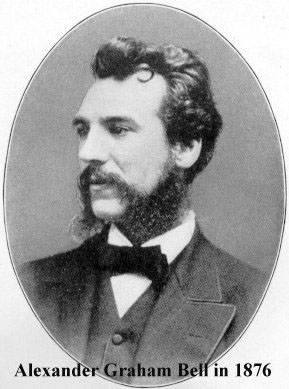|
First Phone
Message
sent 60 years ago
Alexander Graham Bell talked from
Paris
to his father in Brantford, 10 Aug 1876
It is just 60 years today since
the world's first long-distance telephone message was sent over the wires
of the Dominion Telegraph Company between Brantford and Paris, seven miles
distant. It was sent 10 Aug 1876.
On the Paris end of the line
was Alexander Graham Bell, who, two years before, while a resident of
Brantford, conceived the idea of exciting a metal membrance by electrical
impulse, to transit the vibrations of the human voice. On the other end of
the one-way set were his father, Prof. Alexander Melville Bell, and an
uncle, Prof. David C. Bell.
At his Brantford home, Tutela
Heights, and at Boston, Bell had tested the device previously. Concert
parties had been arranged to demonstrate that the new discovery would
carry voices.
At Tutela Height he wrote the
specifications of his invention and registered them at Washington. Later a
United States Supreme Court decision established him as first inventor of
the telephone.
In the Brantford-Paris
experiment, Bell arranged that persons in Brantford were to sing, talk or
recite into the transmitter while he listened at the receiver. He could
reply only by telegraph.
He listened to the results for
some time, then telegraphed to W. D. Griffin, of the telegraph company at
Brantford, asking him to make certain changes in the arrangements of the
coils. The new arrangement cleared articulation, and Bell thought he could
distinguish the voice of his father.
He again telegraphed
Brantford, and was told his father had been speaking into the receiver for
some time. The test was satisfactory to Bell, and in his mind demonstrated
the practicability of his invention.
A memorial to Bell stands at
Brantford, unveiled by the Duke of Devonshire, when he was
Governor-General of Canada. In the Bell homestead is a piece of the
original wire used in his early experiments. |

|

